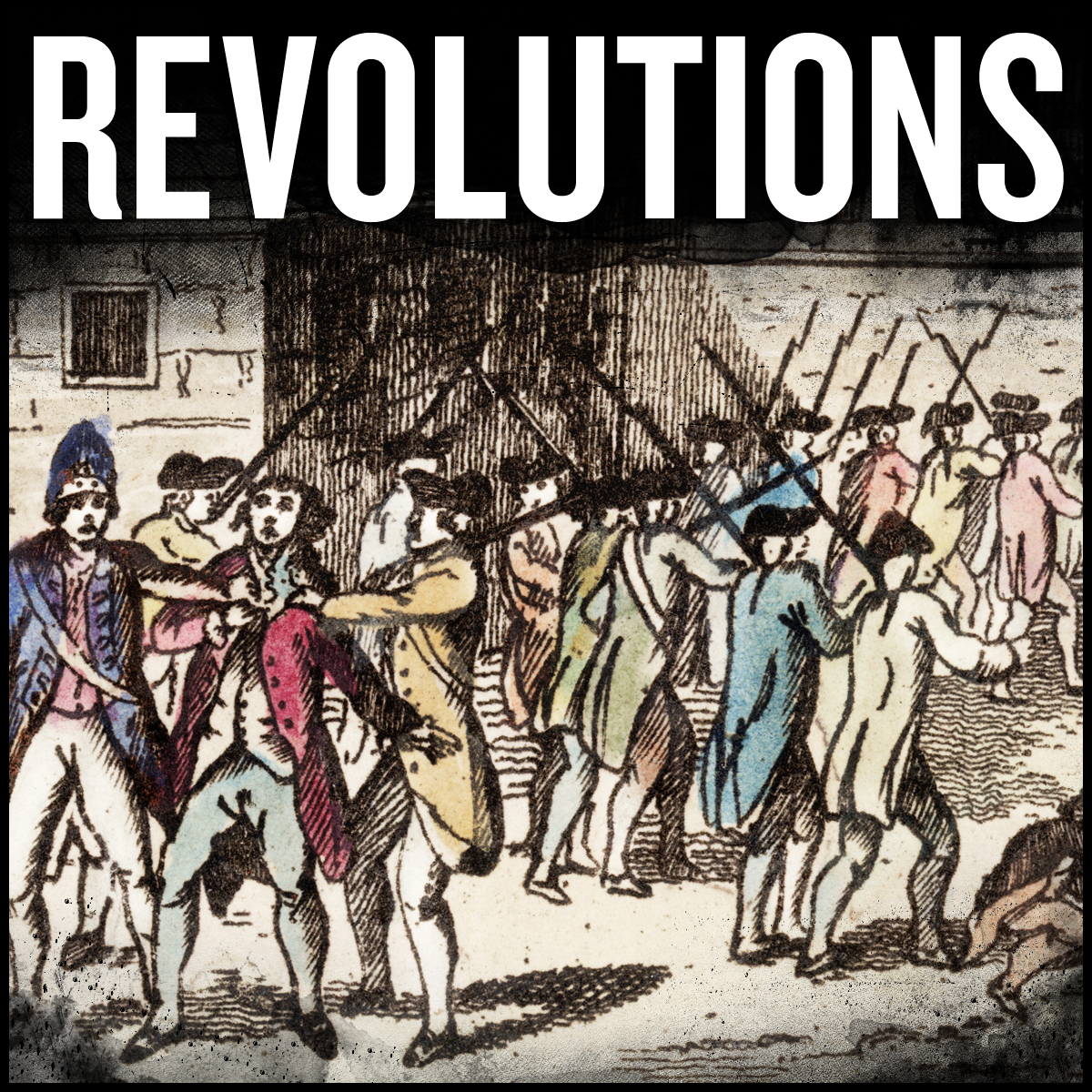
Door Key
I find myself drawn to the more social side of history than dates or battles. While I do think dates and battles are important, I find questions like ‘When did Catherine of Aragon realize she'd lost Henry VIII’s love to Anne Boleyn?’ or ‘Just what exactly was Aaron Burr's deal?’ to be what really fascinates me about history. This is the lens that I view history from on the Door Key Podcast (and the accompanying Substack newsletter) because I'm a dork with a deep love of history who wants to talk about it.
https://doorkey.substack.com/
Door Key
Sally Ride
I would love to hear from you - click here to send Door Key a written message!
June is Pride Month, and Door Key is celebrating that by talking about Sally Ride!
Sally Ride was an American astronaut and physicist. She joined NASA in 1978, and in 1983 became the first American woman and the third woman to fly in space. She was the youngest American astronaut to have flown in space. Sally Ride is also the first astronaut known to have been part of the LGBTQ+ community.
☕️ Production & marketing assistance: Coffeelike Media,
https://www.coffeelikemedia.com/
Subscribe to the Door Key Substack newsletter FREE and paid options:
https://doorkey.substack.com/
Follow Door Key on Social Media:
- Facebook: https://www.facebook.com/groups/1040108179952433
- Instagram: https://instagram.com/doorkeypod
- Threads: @doorkeypod
- LinkedIn: http://www.linkedin.com/in/doorkeypod
- Email: doorkeypod@gmail.com
Support Door Key:
- Become a paid subscriber on the Door Key Substack newsletter: https://doorkey.substack.com/
- Buy me a cup of coffee: https://www.buymeacoffee.com/doorkeypod
- Make a donation via PayPal: https://paypal.me/Doorkeypod?country.x=US&locale.x=en_US
- use our Buzzsprout affiliate link to host your podcast on this platform
Hello everyone! June is Pride month, and I’m celebrating that by talking about Sally Ride today. Sally was the first American woman in space, and part of the LBGTQ+ community, and I’m really excited to tell her story.
Sally Ride was born on May 26, 1951 in Los Angeles, California. She had a younger sister named Karen. Sally’s mother was a volunteer counselor at a women's correctional facility. Her father served with the U.S. Army in Europe during World War II. After the war, he got his master's degree in education at UCLA. He became a political science professor at Santa Monica College.
In 1960, Sally was nine years old, and her family went to Europe for a year. She played tennis for the first time when she was in Spain. Sally really enjoyed sports, but especially loved tennis. When Sally was ten, Alice Marble, who was a former world number one player, coached her. By 1963, Sally was ranked number 20 in Southern California for girls under 12. She started attending Westlake School for Girls, a private, exclusive all-girls school in Los Angeles, on a tennis scholarship. She wanted to be an astrophysicist.
Sally graduated in June, 1968, and took an advanced math class at Santa Monica College over the summer.
A friend of Sally’s named Sue wanted to go to Swarthmore College in Pennsylvania, so Sally applied to go there too. The dean of admissions was the one who interviewed her. He was impressed by her brains, and her ability to play tennis. She was admitted to Swarthmore on a full scholarship. She started class that September. Sally played golf, and made the school’s field hockey varsity team. Sally was really good at tennis though – she won all six of her intercollegiate tennis matches, and became the Eastern Intercollegiate Women's Singles champion. She defended her title in May 1969, winning in straight sets. Going into this, I had no idea that Sally Ride – the first American woman in space – was so good at sports, and I’m here for it!
As well as things were going for Sally in Pennsylvania, she missed California. Swarthmore didn’t have indoor tennis courts, so she couldn’t practice when it snowed. After three semesters in Pennsylvania at Swarthmore, she returned to California in January, 1970 with the hopes of becoming a professional tennis player.
Sally went to UCLA, where she enrolled in courses in Shakespeare and quantum mechanics. It’s noted that she got an A in both of those classes, which doesn’t surprise me! She was the only woman majoring in physics.
Sally was romantically involved with the teaching assistant, John Tompkins. But he went to Moscow to research at the Institute for High Energy Physics. This was also around the time that Sally realized that she wasn’t going to be a professional tennis player. She played three matches, and realized that she would need to devote all her time to practice to get to be at professional level. So she gave that idea up.
This is sad, but don’t feel too bad for Sally, because she would end up going to Stanford. Not only did Standford want her for their tennis team, but it just so happened that the dean of admissions that had been impressed by her at Swarthmore was now the dean of admissions at Stanford, and he approved her admission, no problem.
Sally graduated in 1973 with a Bachelor of Science degree in physics and a Bachelor of Arts degree in English literature. She would then go on to earn a Master of Science degree in physics in 1975 and a Doctor of Philosophy in 1978. Astrophysics and free-electron lasers were her areas of study. She wrote her doctoral dissertation on ‘the interaction of X-rays with the interstellar medium’. Easy peasy, right?
At Stanford, Sally renewed her acquaintance with Molly Tyson, who she already knew from the tennis circuit, and had played doubles with. To earn money, Sally and Molly, who were in a relationship at this point, gave tennis lessons. In 1971 and 1972 they were counselors at Dennis Van der Meer's TennisAmerica summer camp at Lake Tahoe, Nevada. In August 1972, Sally played in a doubles match with Van der Meer against Billie Jean King, who was the number 1 ranked female tennis player, and Dick Peters, the camp director. Billie Jean King became a friend and mentor of Sally’s. And Sally watched Billie win the Battle of the Sexes match against Bobby Riggs in 1973. Molly ended the relationship with Sally in 1975, and Sally moved in with Bill Colson, who was a fellow graduate physics student who was recently divorced.
Then, in January 1977, Sally saw an article on the front page of The Stanford Daily that explained how NASA was recruiting a new group of astronauts for the Space Shuttle program and wanted to recruit women. No woman had ever been a NASA astronaut. Sally mailed a request for, and received the application forms.
Sally's application was one of 8,079 that NASA received. She then became one of 208 finalists. She ending up making it to the final group of 20. She went to NASA's Johnson Space Center in Houston, Texas for a week of interviews and medical examinations. Her physical fitness impressed the doctors. They also placed her in a Personal Rescue Enclosure to see if she suffered from claustrophobia. She was asked to write a one-page essay on why she wanted to become an astronaut, then was interviewed by the selection committee. She got the phone call on January 16, 1978 from NASA's director of flight operations that she had been selected as part of NASA Astronaut Group 8. How freaking cool is that??!
Group 8 had a name for itself: ‘TFNG’. There’s a joke behind this. Officially, publicly, this acronym stood for ‘Thirty-Five-New-Guys’, but among themselves, it stood for the military phrase ‘The Fucking New Guy’, used to denote newcomers to a military unit. I’m explaining this now, because the phrase TFNG comes up several more times in this, and it cracks me up every time.
Officially, the members of this group were astronaut candidates; they would not become full-fledged astronauts until they had completed their training. Sally bought a unit in the Nassau Bay, Texas area, and moved in with Bill Colson, who she was still in a relationship with. He had secured a research grant at Rice University so that they could move to Houston together. Sally and Bill broke up in January 1979, and she briefly dated fellow astronaut candidate Robert ‘Hoot’ Gibson.
Part of astronaut candidate training included learning to fly NASA's T-38 Talon jet aircraft. Officially, mission specialists didn’t have to qualify as pilots, they were to ride in the back seat, and just be able to take care of an emergency if something happened to the pilot. They weren’t supposed to control the aircraft below 5,000 feet (which is 1,500 m). However, and I’m sure you can see where this is going: many of the astronaut pilots and pilot candidates loved flying and ignored the rules. They would let some of the candidates fly the jets lower. Sally enjoyed flying so much that she took private flying lessons to earn a private pilot's license. She even bought a part interest in a Grumman Tiger aircraft, which she would fly on weekends. Then, on August 31, 1979, NASA announced that the astronaut candidates had completed their training and evaluation, and were now officially astronauts, qualified to be selected for space flight crews. This is so cool!
In 1981, Sally began dating Steven Hawley, who was another one of the TFNGs. They moved in together, and got married on July 26, 1982 in Steven’s parents’ backyard in Salina, Kansas. Sally flew up from Houston for the wedding in her Grumman Tiger, and wore white jeans. The ceremony was kept low-key, with only parents and siblings in attendance.
Sidenote: Sally and Steven became the third NASA astronaut couple, after Rhea Seddon and Hoot Gibson, who had been married a few months before, and Anna Fisher and her husband Bill Fisher.
Sally didn’t take Steven Hawley's name.
Sally served as what’s known as a ground-based capsule communicator (CapCom) for a couple of Space Shuttle flights, and helped develop the Shuttle Remote Manipulator System (RMS). She was the first woman to serve as a CapCom.
By early 1982, the Chief of the Astronaut Office wanted to begin scheduling missions with the TFNGs. They wanted a woman to fly on the mission, and since the mission involved the use of the RMS, the choice came down to Sally, and two other women. Sally would eventually be chosen, for reasons that included her agreeable personality, her ability to work with others, her performance as CapCom, and her skill with the robot arm. NASA Headquarters ultimately approved Sally's selection, which was officially announced in April 1982.
As the first American woman to fly in space, Sally was subjected to a lot of media attention. There were over five hundred requests for private interviews, all of which were declined. Instead, NASA hosted the usual pre-launch press conference on May 24, 1983. Sally was asked questions such as, "Will the flight affect your reproductive organs?" and "Do you weep when things go wrong on the job?" Sally insisted that she saw herself in only one way — as an astronaut.
Sidenote: These are terrible questions from the media, but … if I’m being honest, NASA doesn’t seem to have known how to conduct themselves either. Here’s a quote from Sally’s Wikipedia page: ‘NASA was still adjusting to female astronauts, and engineers had asked Ride to assist them in developing a ‘space makeup kit’, assuming it would be something a woman would want on board. They also infamously suggested providing Ride with a supply of 100 tampons for the six-day mission.’ I mean …
When the Space Shuttle lifted off from the Kennedy Space Center on June 18, 1983, Sally became the first American woman to fly in space, and the third woman overall (the other two women were Russian cosmonauts).
Not only was Sally the first American woman in space, she also became the youngest American astronaut in space, which I love all these records being broken!
The purpose of the mission Sally was on was to deploy two communications satellites. Both were deployed during the first two days of the mission.
The mission also carried the first Shuttle pallet satellite, which carried ten experiments to study formation of metal alloys in microgravity. The mission also studied Space Adaptation Syndrome, which is described as ‘a bout of nausea frequently experienced by astronauts during the early phase of a space flight’. Sally was not affected by this syndrome. Bad weather forced the shuttle to land at Edwards Air Force Base in California instead of the Kennedy Space Center. But otherwise, everything went well. The mission lasted 6 days, 2 hours, 23 minutes and 59 seconds.
Sally was a celebrity now, and she and her crewmates spent the next few months after their flight on tour. She met with the Governor of California and the Mayor of New York. Sally testified before the Congressional Space Caucus on the efficiency of the robot arm, and addressed the National Press Club. But she declined to appear with Bob Hope, whom she felt was sexist. The crew presented President Ronald Reagan with jelly beans that had been flown on the flight.
In September 1983, on her own initiative, Sally went to Budapest to meet with Svetlana Savitskaya, a Russian cosmonaut who was the second woman to fly in space. The two formed an instant friendship, they talked for six hours. They also exchanged gifts: Svetlana presented Sally with Russian dolls, books, and a scarf, and Sally gave Svetlana a charm that had flown on the mission and a TFNG shirt. They also signed autographs for each other.
While she was still on the publicity tour, Sally was assigned to the crew of the next space shuttle mission. Sally would become the first American woman to fly twice, and her TFNG crewmate Kathryn Sullivan would become the first American woman to perform an extravehicular activity (EVA). Svetlana had already become the first woman to do both when she flew in space in July 1984. However, this would be the first time that two women were in space together.
The mission lifted off on October 5, 1984. The crew deployed the Earth Radiation Budget Satellite, conducted scientific observations of the Earth with the OSTA-3 pallet, and conducted numerous in-cabin experiments as well as activating eight Getaway Special canisters containing experiments devised by outside groups.
Once in orbit, Sally immediately began moving about, knowing from experience that she wouldn’t suffer from space adaptation syndrome.
When the SIR-B antenna failed to unfold correctly, Sally used the robot arm to shake it loose, manipulating the robot arm much faster than she had been trained. She also repaired a broken antenna on the middeck. During the second day of the mission, the SIR-B antenna had to be stowed so that the shuttle's orbit could be altered, but its latches failed to clamp and close the antenna. Sally then used the RMS to nudge the antenna panel closed. They also showed that a satellite could be refueled in orbit. On this mission the shuttle completed 132 orbits of the Earth in 197.5 hours, landing back to earth on October 13, 1984. On her two flights Sally had spent over 343 hours in space. During the mission, Sally carried a white silk scarf that had been worn by Amelia Earhart. I love this fact so much! My heart!
Sally was soon back training for her third flight, but then the crew was switched to a different one, scheduled to be flown in July 1986. On January 7, 1986, Sally provided a glowing reference for her friend Lynn Sherr for NASA's Journalist in Space Project. Lynn became one of the finalists.
In 1985, Sally began an affair with Tam O'Shaughnessy. The two knew each other from the junior tennis circuit, from when Sally was at Stanford. O'Shaughnessy was now living in Atlanta, and had recently broken up with her partner. Sally visited when she went to Atlanta on speaking engagements. Sally’s husband Steven Hawley was aware that his marriage was in trouble, but not that O'Shaughnessy was more than a friend. Sally still performed her astronaut spouse duties for Steven when he flew in space for the second time in January 1986. Astronauts and their spouses were quarantined for a few days before launch, and they stayed at the astronaut beach house. Spouses were expected to attend events before and after launches, including the post-mission publicity tour. I can’t imagine how uncomfortable that would be for a couple whose marriage was breaking up.
Then the Space Shuttle Challenger disaster happened. A flight Sally was scheduled to be on was immediately cancelled. Sally was appointed to the Rogers Commission, which was the presidential commission investigating the disaster. She headed its subcommittee on operations. She was the only Space Shuttle astronaut and the only current NASA employee on the commission. The Rogers Commission submitted its report on June 6, 1986.
Following the Challenger investigation, Sally was assigned to NASA headquarters in Washington, D.C., where she led NASA's first strategic planning effort. She authored a report titled "NASA Leadership and America's Future in Space". NASA management was unhappy with the fact that this report prioritized exploration of Earth over a mission to Mars. She founded NASA's Office of Exploration, which she headed for two months. On weekends she flew to Atlanta to be with O'Shaughnessy. In October 1986, she published a children's book, To Space and Back, which she co-wrote with Sue Okie, her high school and Swarthmore friend.
In May 1987, Sally announced that she was leaving NASA to take up a two-year fellowship at the Stanford University Center for International Security and Arms Control. She and Steven divorced in June.
At Stanford, her colleagues included Condoleezza Rice, who was a specialist on the Soviet Union. Sally researched means by which nuclear warheads could be counted and verified from space, but the impending end of the Cold War made this issue much less pressing. As the end of her fellowship approached, Sally hoped to secure a permanent position at Stanford. Sidney Drell, who had recruited her, tried to get a department to make Sally a professor, but none would. Drell resigned from the in protest.
On July 1, 1989, Sally became a professor of physics at the University of California, San Diego, and director of the California Space Institute (Cal Space), which was part of the university's Scripps Institution of Oceanography. She remained director of Cal Space until 1996. She retired from the University of San Diego in 2007 and became a professor emeritus.
From the mid-1990s until her death, Sally led two public-outreach programs for NASA — the ISS EarthKAM and GRAIL MoonKAM projects, in cooperation with NASA's Jet Propulsion Laboratory and the University of San Diego. These programs allowed middle school students to request images of the Earth and the Moon.
Sally bought a house in La Jolla, California, and O'Shaughnessy moved in after taking a teaching position at San Diego Mesa College. Sally turned down an offer from President Bill Clinton to become NASA Administrator, not wanting to leave California. But she did agree to serve on the President's Committee of Advisors on Science and Technology. This involved flying to Washington, D.C., every few months for studies and presentations. Due to her experience at the Center for International Security and Arms Control, the panel she was on assessed the risk of hazardous materials being stolen in Russia and ending up in the hands of terrorists.
From September 1999 to July 2000, Sally was the president of the space news website, Space.com. They aggregated news about science and space on its website. She then became president and CEO of Sally Ride Science, a company she co-founded with O'Shaughnessy, who served as the CEO and chair of the board. Sally Ride Science created entertaining science programs and publications for upper elementary and middle school students, with a particular focus on girls. Sally and O'Shaughnessy co-wrote six books on space aimed at children, all with the goal of encouraging children to study science.
In 2003, Ride served on the Columbia Accident Investigation Board, and was the only person to serve on both the panel that investigated the Challenger disaster and the one that investigated the Columbia disaster.
Sally was contacted by the head of President Barack Obama's transition team for NASA in 2008, but Sally once again made it clear that she was not interested in the job of NASA administrator.
Sally served on the board of the National Math and Science Initiative in 2007 and the Educate to Innovate initiative in 2009.
Sally delivered a speech at the National Science Teachers Association Conference in San Francisco on March 10, 2011. O'Shaughnessy and a friend noticed that Sally looked ill. Alarmed, O'Shaughnessy had her make a doctor's appointment for the following day. An ultrasound revealed a tumor the size of a golf ball in her abdomen. A follow-up CT scan confirmed a diagnosis of pancreatic cancer. She had chemotherapy and radiation therapy to reduce the size of the tumor.
Sally had ensured that O'Shaughnessy would inherit her estate when she drew up her will in 1992. They registered their domestic partnership on August 15, 2011. On October 27, Sally had surgery to try to get rid of the cancer.
Sadly, the surgery didn’t work. Sally died on July 23, 2012 at her home in La Jolla. She was 61.
Sally was cremated, and her ashes were interred next to her father’s ashes at Woodlawn Memorial Cemetery in Santa Monica. Her papers are in the National Air and Space Museum Archives of the Smithsonian Institution. Sally's obituary publicly revealed for the first time that O'Shaughnessy had been her partner for 27 years. This made Sally the first known LGBTQ+ astronaut. The relationship was confirmed by Sally’s sister Karen, who said Sally chose to keep her personal life private, including her sickness and treatments. Which … fair.
Sally lived such a full and extraordinary life, that she received many awards throughout her lifetime and after. I couldn’t possibly list them all, but I’ll list a few that I think she’d be most proud of: she was inducted into the National Women's Hall of Fame, the Astronaut Hall of Fame, and was awarded the NASA Space Flight Medal twice. Elementary schools in the United States were named after her. In 1984, she received the Samuel S. Beard Award for Greatest Public Service by an Individual 35 Years or Under. She was inducted into the California Hall of Fame at the California Museum for History, Women, and the Arts in 2006. The following year she was inducted into the National Aviation Hall of Fame in Dayton, Ohio. In December 2012, the Space Foundation gave Sally its highest honor: the General James E. Hill Lifetime Space Achievement Award. Sally was awarded the Presidential Medal of Freedom in 2013 – O’Shaughnessy accepted it on Sally’s behalf. Sally Ride was inducted into the Legacy Walk, an outdoor public display in Chicago that celebrates LGBTQ+ history and people, in 2014.
And that’s the story behind the incredible life of Sally Ride. She was an amazing person, and I’m so glad to be able to tell her story. I learned a lot about Sally’s life that I didn’t know before researching, and everything I learned just made me admire her more than I already did.
I’m going to let Sally Ride have the last word in this episode:
‘Everywhere I go I meet girls and boys who want to be astronauts and explore space, or they love the ocean and want to be oceanographers, or they love animals and want to be zoologists, or they love designing things and want to be engineers. I want to see those same stars in their eyes in 10 years and know they are on their way.’
Here are some of the sources I used for this episode:
Science.nasa.gov / Biography.com / sallyridescience.ucsd.edu / Wikipedia
Podcasts we love
Check out these other fine podcasts recommended by us, not an algorithm.

Vulgar History: Regency Era
Vulgar History | Realm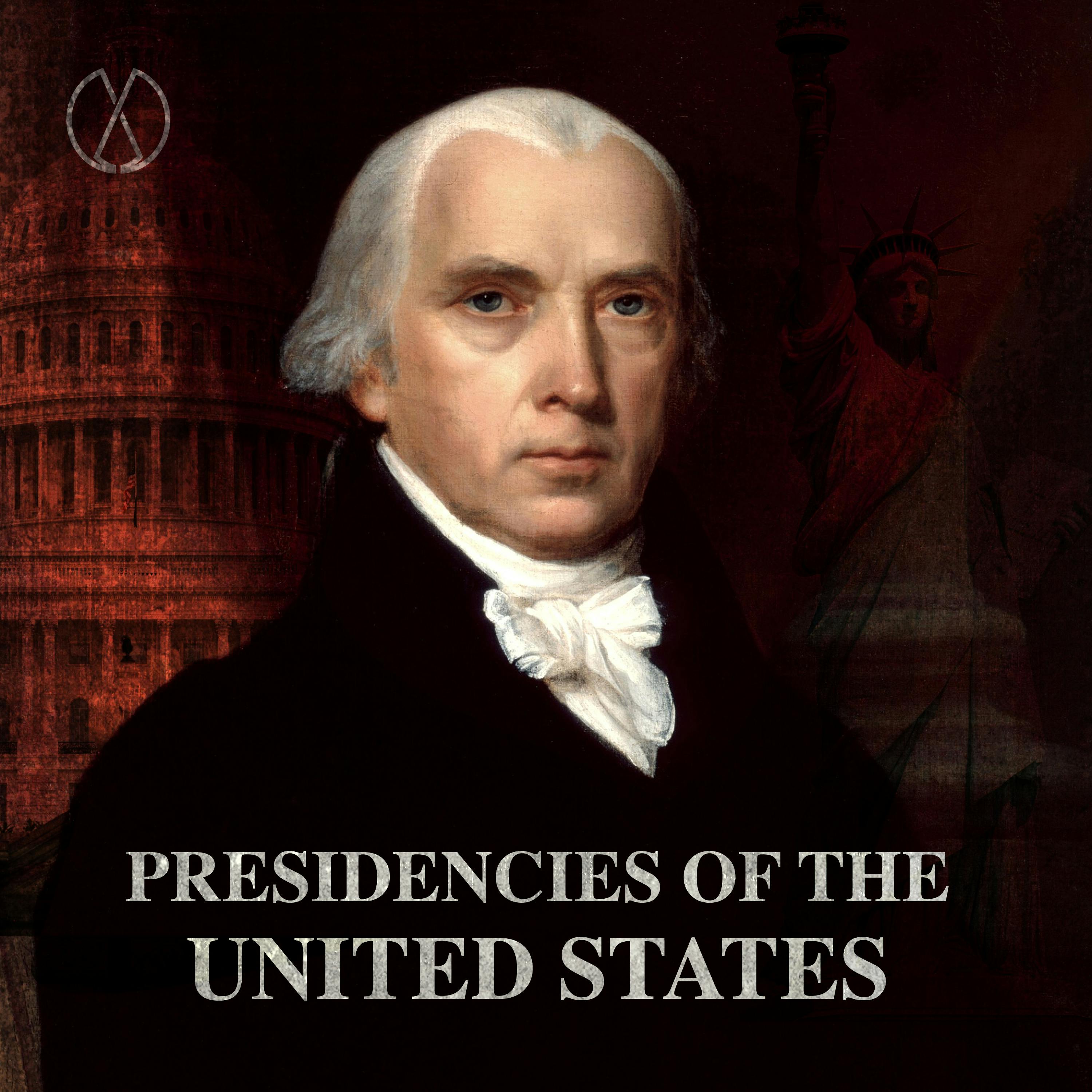
Presidencies of the United States
Evergreen Podcasts
World Herstory
Tabitha Bear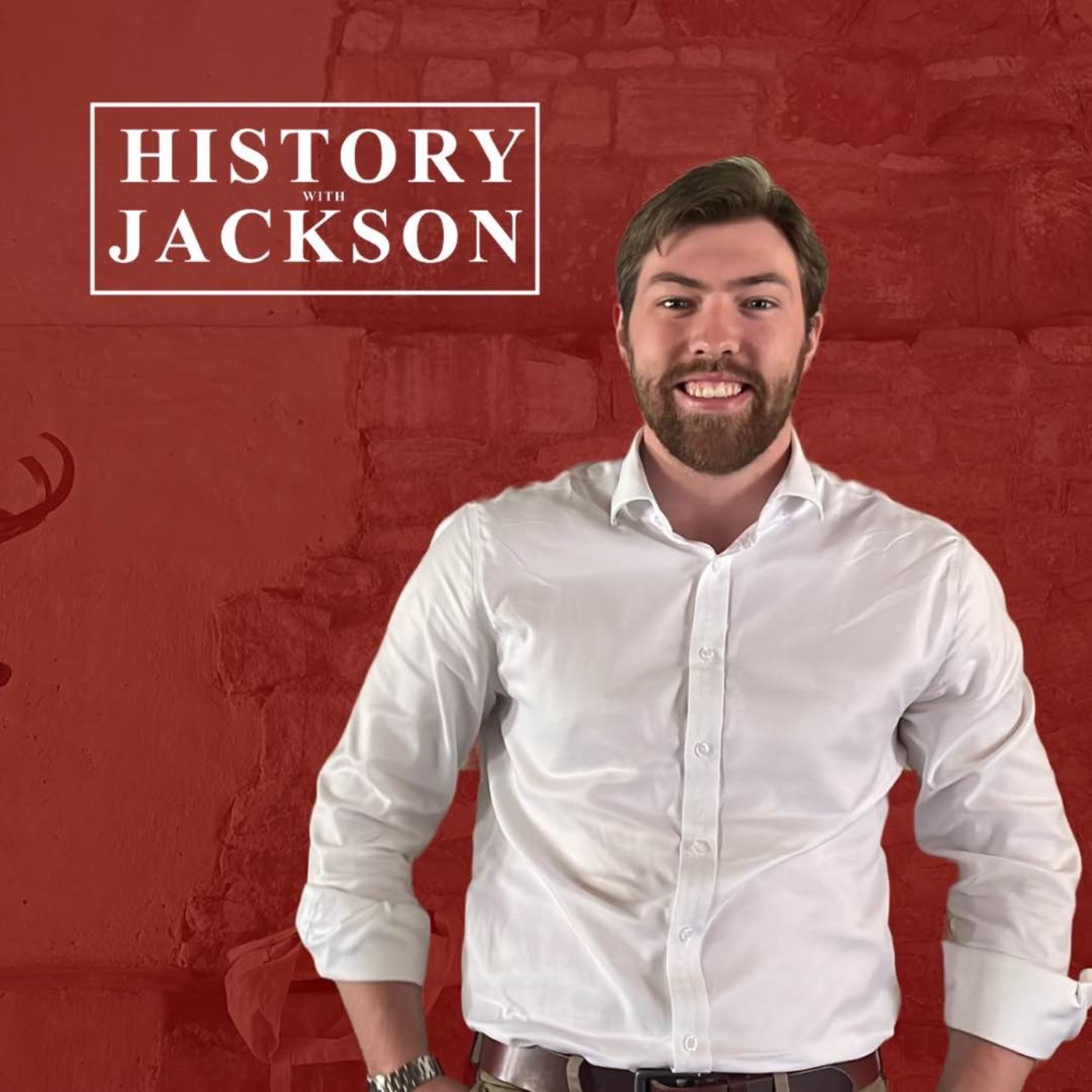
History with Jackson
History with Jackson
Civics & Coffee: A History Podcast
Alycia Asai
Deep into History
Deep into History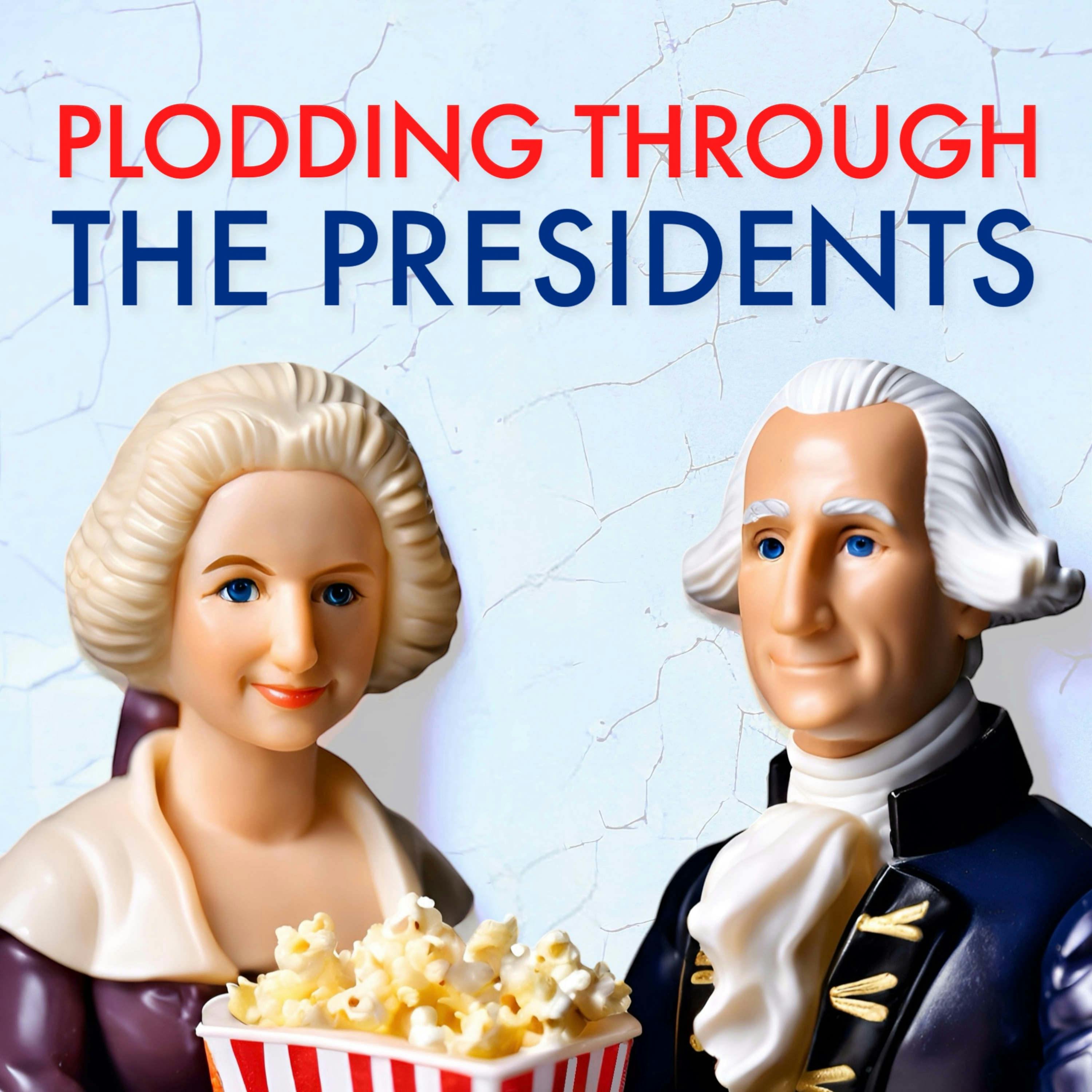
Plodding Through The Presidents
Howard & Jessica Dorre
You're Wrong About
Sarah Marshall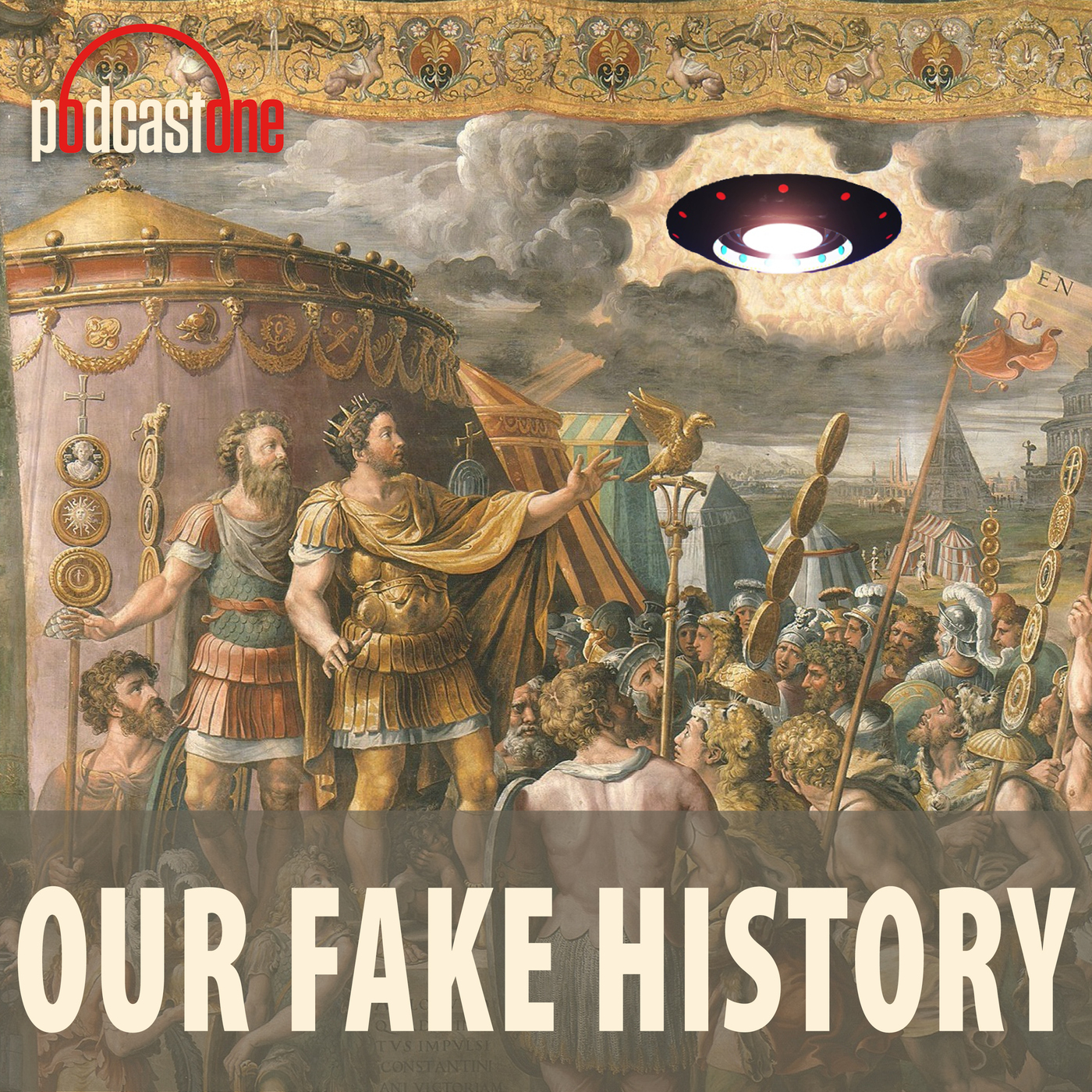
Our Fake History
PodcastOne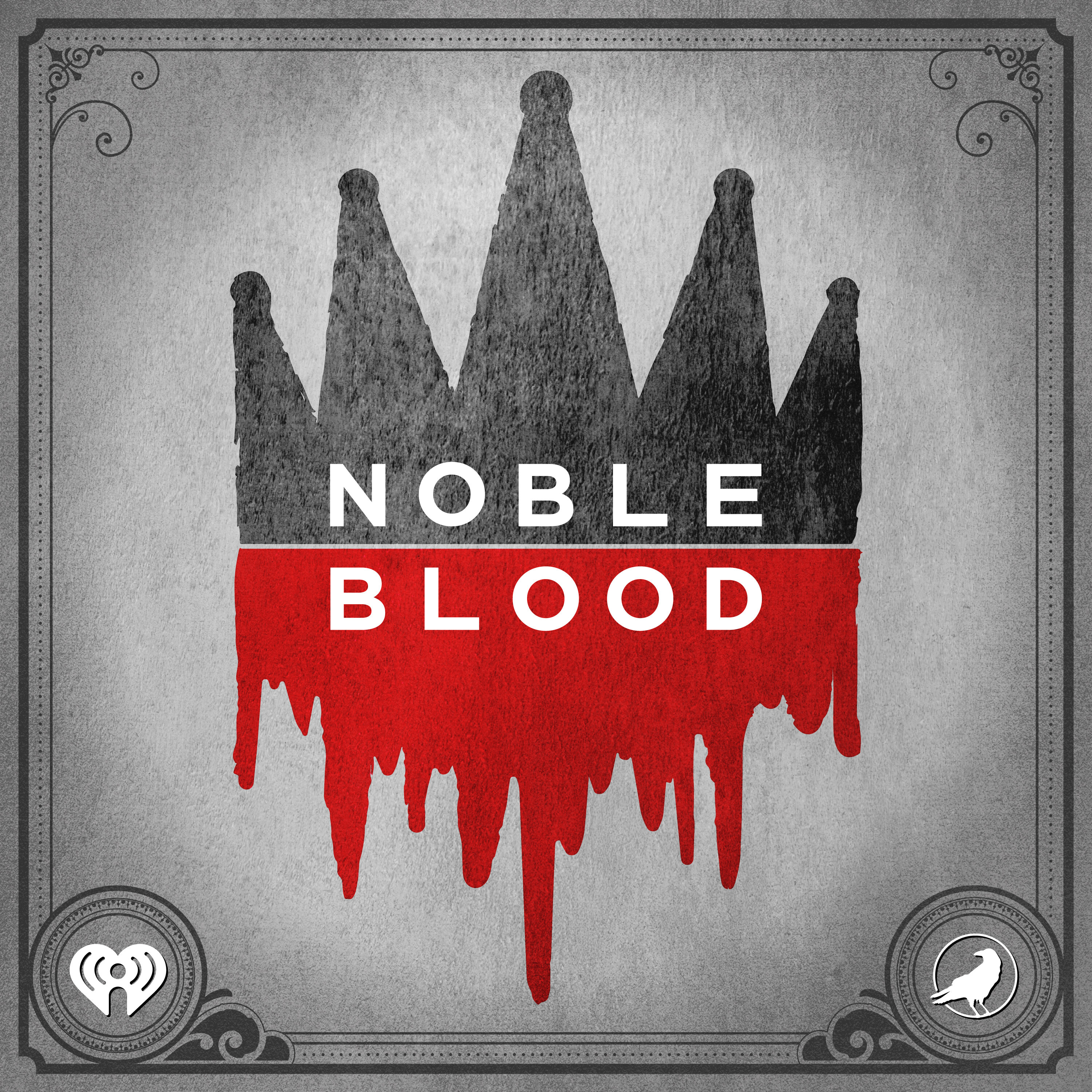
Noble Blood
iHeartPodcasts and Grim & Mild